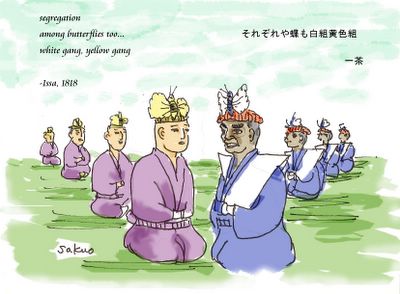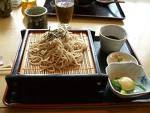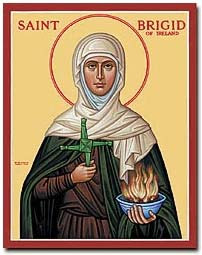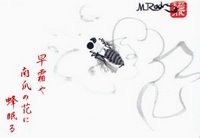. chocho 蝶々 butterfly art motives .
:::::::::::::::::::::::::::::::::::::::::::::::::::::::::::::::::::::::::::::::::::::::::::::::::::::::::::::::::::::::::::::::::::
Butterfly (choochoo 蝶々) Chocho
***** Location: Japan, Worldwide
***** Season: Spring and others, see below
***** Category: Animal
*****************************
Explanation
For the Japanese haijin, the butterfly it is not just an ubiquious animal in springtime, but relates to a much deeper layer of Taoist philosophy about the essence of being. I am sure most of you know the famous parable by the Chinese sage Chunag-Tsu (Chunag Tzu).
Here is a quote from a HP by Richard Zipoli:
Chuang Tzu was a Taoist sage during the fourth and third centuries B.C. The book of prose attributed to him is known for its playful expression of freedom and spontaneity. Chuang Tzu’s butterfly dream is among the most famous passages in Chinese literature. Li Po was a poet who lived in eighth-century China, during the Tang dynasty, which is sometimes considered the “Golden Age of Zen”. He is generally regarded as one of China’s most influential poets. Matsuo Basho, who lived in 17th-century Japan, is considered by many to be Japan's greatest haiku poet. From “The Chuang Tzu”, Chapter 2:
Chuang Tzu dreamed that he was a butterfly.
All day long, he floated on the breeze
Without a thought of who he was or where he was going.
When he awoke, Chuang Tzu became confused.
"Am I a Man”, he thought,
"who dreamed that I was a butterfly?
Or am I butterfly, dreaming that I am a man?
Perhaps my whole waking life is
but a moment in a butterfly's dream!.
This is a story of transformation"
. . . . .
“Ancient Song”, by Li Po
(from The Selected Poems of Li Po, by David Hinton):
Chuang-tzu dreams he's a butterfly,
and a butterfly becomes Chuang-tzu.
All of transformation this one body,
boundless occurrence goes on and on:
it’s no surprise Eastern seas become
western streams shallow and clear,
or the melon-grower at Ch'ing Gate
once reigned as Duke of Tung-ling.
Are hopes and dreams any different?
We bustle around, looking for what?
. . . . .
“Dreams”
by Basho (from A Zen Wave, by Robert Aitken):
You are the butterfly
And I the dreaming heart
Of Chuang-tzu
君や蝶我や荘子が夢心
kimi ya cho ware ya Sooji ga yumegokoro
http://www.haianpagoda.org/Andrew/newsletter/Chuang.htm
Written on the 10th day of the fourth lunar month in 1690
元禄3年4月10日 in a letter to 怒誰.
Takahashi Dosui 高橋怒誰
(? - 1743)
Takahashi Kihei 高橋喜兵衛
A leading figure of the Basho disciples in Omi ( Oomi Shoomon 近江蕉門).
The younger brother of Suganuma Kyokusui 菅沼曲水, who had offered the 幻住庵 Genjuan to Basho. When Kyokusui was out of town on business, Dosui took good care of Master Basho.
In a letter to Dosui in the same year, Basho also mentioned the following hokku
雁聞きに京の秋に赴かん
. kari kiki ni miyako no aki ni omomukan .
I will come to Kyoto . . .
MORE about the heart, soul, mind by
. Matsuo Basho 松尾芭蕉 - Archives of the WKD .
. Suganuma Kyokusui 菅沼曲水 .
. . .
起きよ起きよ我が友にせん寝る胡蝶
okiyo okiyo waga tomo ni sen neru kochoo ( oki yo)
get up! get up!
and become my friend
you sleeping butterfly
Wake up, wake up, and be my comrade, sleeping butterfly
Wake up wake up my friend be sleeping butterfly
I will make thee my comrade, thou sleeping butterfly
Acorda, acorda! Vem ser minha amiga , Borboleta que dorme!
??
Wake, butterfly -
It's late, we've miles
To go together.
source : thegreenleaf.co.uk
- reference - more translations
Written around 天和元年, Basho age 38 or later
Basho is pleading with the butterfly:
"If you are really the the Butterfly from Chuang Tsu, coming from China, then please come here and tell me all about the poetry of China!"
MORE about the butterfly by
. Matsuo Basho 松尾芭蕉 - Archives of the WKD .
:::::::::::::::::::::::::::::::::::::::::::::::::::::::::::::::::::::::::::::::::::::::::::::::::::::::
Just one word, one animal, but so much depth implied in simply mentioning the name in an Asian context. The word BUTTERFLY has different meanings in different cultures. Let us look at some more of them.

http://images-eu.amazon.com/images/P/3933922038.03.LZZZZZZZ.jpg
:::::::::::::::::::::::::::::::::::::::::::::::::::::::::::::::::::::::::::::::::::::::::::::::::::
butterfly in spring, haru no choo 春の蝶(はるのちょう)
Special names of butterflies
all are kigo for SPRING
swallowtail, agehachoo, 鳳蝶(あげはちょう)
butterfly, choochoo 蝶々(ちょうちょ), soochoo双蝶(そうちょう)
shirochoo 粉蝶(しろちょう)fam. Pierinae
yellow butterfly, kichoo 黄蝶(きちょう)
Eurema hecabe、
cabbage butterfly, monshirochoo 紋白蝶(もんしろちょう)
Pieris rapae
... monkichoo 紋黄蝶(もんきちょう)Colias erate
yamajoroo 山上﨟(やまじょろう)
dandanchoo だんだら蝶(だんだらちょう)
Gifu Butterfly, gifuchoo 岐阜蝶(ぎふちょう)
Luehdorfia japonica
shijimichoo 小灰蝶(しじみちょう)fam. Lycaenidae
seserichoo 挵蝶(せせりちょう)fam. Hesperiidae
tatehachoo 蛺蝶(たてはちょう)fam. Nymphalidae
akatatechoo 赤蛺蝶(あかたては)Vanessa indica
ruritatechoo 瑠璃蛺蝶(るりたては)Kaniska canace
sakahachoo 逆八蝶(さかはちちょう)Araschnia burejana
ishigakechoo 、石崖蝶(いしがけちょう)
Cyrestis thyodamas
、
ichimonjichoo 一文字蝶(いちもんじちょう)Ladoga camilla
"big violett, oomurasaki 大紫(おおむらさき)
Sasakia charonda
"little violett", komurasaki 小紫(こむらさき)
Apatura metis

madarachoo 斑蝶(まだらちょう)fam. Danaidae
asagimadara 浅黄斑蝶(あさぎまだら)Parantica sita
. asagi あさぎ - 浅黄 - 浅葱 hues of light yellow, green and blue .
Peacock butterfly, kujakuchoo 孔雀蝶(くじゃくちょう)Inachus io
hiodoshichoo 緋縅蝶(ひおどしちょう)
Nymphalis xanthomelas
hyoomonchoo 豹紋蝶(ひょうもんちょう)Brenthis daphne
"goblin butterfly", tenguchoo 天狗蝶(てんぐちょう)
nout butterfly European beak nettle-tree butterfly
Libythea celtis
"serpent's eye butterfly" janomechoo 蛇目蝶(じゃのめちょう )Minois dryas
higasachoo 日陰蝶(ひかげちょう)Lethe sicelis

"lake butterfly", kochoo 胡蝶(こちょう)
"tree leaf butterfly" konohachoo 木葉蝶(このはちょう)
Kallima inachus . orange oakleaf

"sleeping butterfly", nemuru choo 眠る蝶(ねむるちょう)
"butterfly going crazy", kuruu choo 狂う蝶(くるうちょう)
butterfly dancing, mau choo舞う蝶(まうちょう)
:::::::::::::::::::::::::::::::::::::::::::::::::::::::::::::::::::::::::::::::::::::::::::::::::::::
winter butterfly, winter's butterfly,
fuyu no choo 冬の蝶
..... fuyuchoo 冬蝶
kigo for winter
Details are HERE
freezing butterfly, frozen butterfly, itechoo 凍蝶
summer butterfly, natsu no choo 夏の蝶
autumn butterfly, aki no choo 秋の蝶
*****************************
Worldwide use
Australia
Blue Triangle butterfly, bluebottle (Graphium sarpedon choredon) Australia
:::::::::::::::::::::::::::::::::::::::::::::::::::::::::::::::::::::::::::::::::::::::::::::::::::::
Sufi Mythology
The life cycle of the butterfly presents a perfect analogy for immortality:
a). The crawling caterpillar signifies the ordinary life of mortals, preoccupied with fulfilling our trivial needs.
b). The next stage, the dark chrysalis (cocoon), represents death.
c). The butterfly symbolizes rebirth and a new beginning in life, with the soul fluttering free of material concerns and restrictions.

These three stages also serve as a microcosm for the biography of Jesus Christ - life, death and resurrection.
Read more about jewelery and ancient symbols
© Nitin Kumar, Exotic India
http://www.exoticindia.com/article/symbolicjewelry/2/
:::::::::::::::::::::::::::::::::::::::::::::::::::::::::::::::::::::::::::::::::::::::::::::::::::::
. tsurushibina, tsurushi bina つるし雛 / 吊るし雛 hanging hina dolls .
*****************************
Things found on the way
*****************************
HAIKU
doing the dishes -
outside
two tender butterflies
Gabi Greve, June 2008
My Simple Life
a love letter
folded in two wings
of a butterfly

Gabi Greve, September 2009
:::::::::::::::::::::::::::::::::::::::::::::::::::::::::::::::::::::::::::::::::::::::::::::::::::::
それぞれや蝶も白組黄色組
sore-zore ya cho mo shiro-gumi kiiro-gumi
segregation
among butterflies too...
white gang, yellow gang
Issa
(Tr. David Lanoue)

Look at the picture and comments of Sakuo here:
http://sakuo3903.blogspot.com/
:::::::::::::::::::::::::::::::::::::::::::::::::::::::::::::::::::::::::::::::::::::::::::::::::::
Two Haiga by Narayanan Raghunathan
a butterfly spirals
in floral cosmoses ~
scent of nectar
http://www.wonderhaikuworlds.com/viewdetail-haiga.php?post=61

... ... ...
twilight gloom
a solitary butterfly
a dog's howl ~
balloon stall ~
a child and mother pose ~
a butterfly joins ~
Read more of Narayanan Raghunathan's Butterfly Haiku here:
India Saijiki
:::::::::::::::::::::::::::::::::::::::::::::::::::::::::::::::::::::::::::::::::::::::::::::::::::::
parsimonious butterflies
in a ferocious windy tangle
clasping benign sepals
Bamdev Sharma, Nepal
:::::::::::::::::::::::::::::::::::::::::::::::::::::::::::::::::::::::::::::::::::::::::::::::::::::::::::::::::::::::::::::::::::

Mourning cloak, Nymphalis antiopa
in the graveyard
a mourning cloak flutters
over the incense ashes
- Shared by Alan Pizarrelli -
Joys of Japan, 2012
Mourning cloaks
gold leafing
our stump
- Shared by Alexis Rotella -
Joys of Japan, 2012
*****************************
Related words
***** First Butterfly, hatsu choo 初蝶
Expresses the joy of seeing it for the first time in spring, thus knowing the long winter is over.

Haiku Collection: First Butterfly
:::::::::::::::::::::::::::::::::::::::::::::::::::::::::::::::::::::::::::::::::::::::::::::::::::
Chunag-Tsu (Chunag Tzu, Zhuangzi)
. Sooshi 荘子 Soshi and Japanese Kigo .
. chocho 蝶々と伝説 butterfly legends .
:::::::::::::::::::::::::::::::::::::::::::::::::::::::::::::::::::::::::::::::::::::::::::::::::::::::::::::::::::::::::::
[ . BACK to DARUMA MUSEUM TOP . ]
[ . BACK to WORLDKIGO . TOP . ]
- #chocho #butterfly #schmetterling -
:::::::::::::::::::::::::::::::::::::::::::::::::::::::::::::::::::::::::::::::::::::::::::::::::::::::::::::::::::::::::::

































